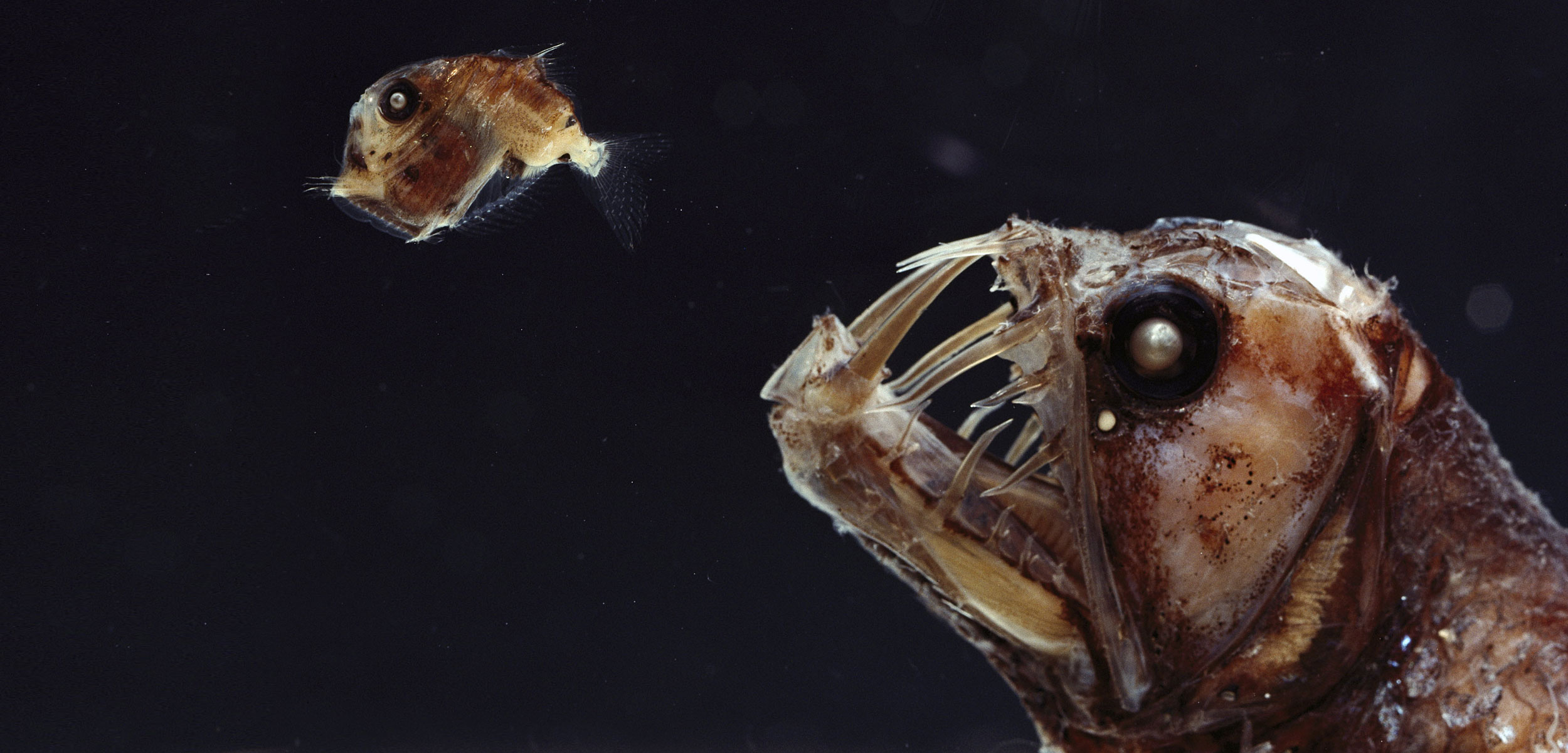Less than a Fifth of Deep-Sea Life Is Identifiable
An epic project to map the seafloor around Pacific islands has helped quantify the mysteriousness of the deep.
Article body copy
Nine hundred hours of deep-sea video footage has revealed a lot about how little we understand the abyssal ocean. Researchers scrutinizing the footage, taken around Pacific islands such as Hawai‘i, have concluded that they only recognize roughly a fifth of the creatures caught on the recordings.
The research, presented at a scientific meeting in San Diego, California this week, gives a clear sense of just how mysterious the deep sea really is. “There’s a lot left to discover,” says biologist Randi Rotjan of Boston University in Massachusetts, who coauthored the work.
It’s an often-quoted (and very true) statement that we have better maps of the moon than we do of the ocean floor. But quantifying just how mysterious the deep sea is is tricky. Most previous studies, says Rotjan, have focused on discovering new species or surveying smaller areas, and it’s hard to compile broad statistics on deep-sea life from lots of little studies done with different methodologies.
The new report is based on data from the CAPSTONE project, an epic campaign led by the US National Oceanic and Atmospheric Administration (NOAA) to study the seafloor around western and central Pacific islands. From 2015 to 2017 the scientists mapped 597,230 square kilometers, documenting an area bigger than California, though still less than half a percent of the total Pacific Ocean. Robotic divers visited habitats ranging from near-deserted abyssal plains to lush hydrothermal vents and caught more than 347,000 deep-sea creatures on camera—everything from tiny worms to sharks the size of pickup trucks.
A team of experts concluded that fewer than 20 percent of the creatures spotted could be identified at the species level. Sometimes that was because the photos were too grainy or the species too small to identify without a microscope, says Rotjan. But the majority were simply unknown.
Kasey Cantwell, a physical scientist with NOAA in Maryland and a member of the project team, says this is the first time anyone has tried to use such a massive data set to quantify how many unknown species there are in the deep sea. The results help pin down estimates of deep-sea biodiversity and abundance. Down the road, the data could help target especially diverse or unique spots for future exploration or conservation efforts.
“Understanding the diversity of a system is important,” says Jim Barry, a senior scientist with California’s Monterey Bay Aquarium Research Institute who was not involved in the study. “We know so little about some aspects of the deep ocean, there’s just a huge hole in our understanding.” That’s particularly important, he notes, as efforts to mine the deep sea come closer to reality.
The CAPSTONE project has shone some light on the odd creatures that dwell on the seafloor. Some animals thought to be scavengers were caught hunting; for example, a caridean shrimp was spotted snaring a dragonfish, and a brittle star was seen grabbing a squid. Some snails were filmed engaging in a partnership not seen before outside of Paleozoic fossils: each snail had its mouth stuck to the anus of a stalked feather star, so it could easily ingest whatever the crinoid excreted. A rare sea star unseen since the early 20th century was finally caught on camera. And a strange little gelatinous, translucent fish previously collected by trawlers was spotted in its natural habitat for the first time.
The study also highlights how deep-sea habitats that look the same to the human eye can host wildly different life. “I was surprised by that,” says Barry. A vertical cliff thousands of meters below a subsurface seamount, for example, attracts very different species than a vertical cliff thousands of meters below an island—whether the land sticks out of the sea or not seems to have a surprisingly big effect on the habitat very far below.
“There are some strange patterns we can’t explain yet,” says study lead and Boston University marine ecology graduate student Brian Kennedy. “Places we thought were interchangeable might not be.”
Those results could impact ideas about which deep-sea areas should be protected.
Although the CAPSTONE project racked up an impressive amount of data, it also highlights what remains to be done, the authors say. More than 86 percent of the Pacific remains unmapped, and 99 percent has yet to be photographed.
“This was one of the largest underwater explorations undertaken by the US government,” says Kennedy, “and it just barely scratches the surface.”

